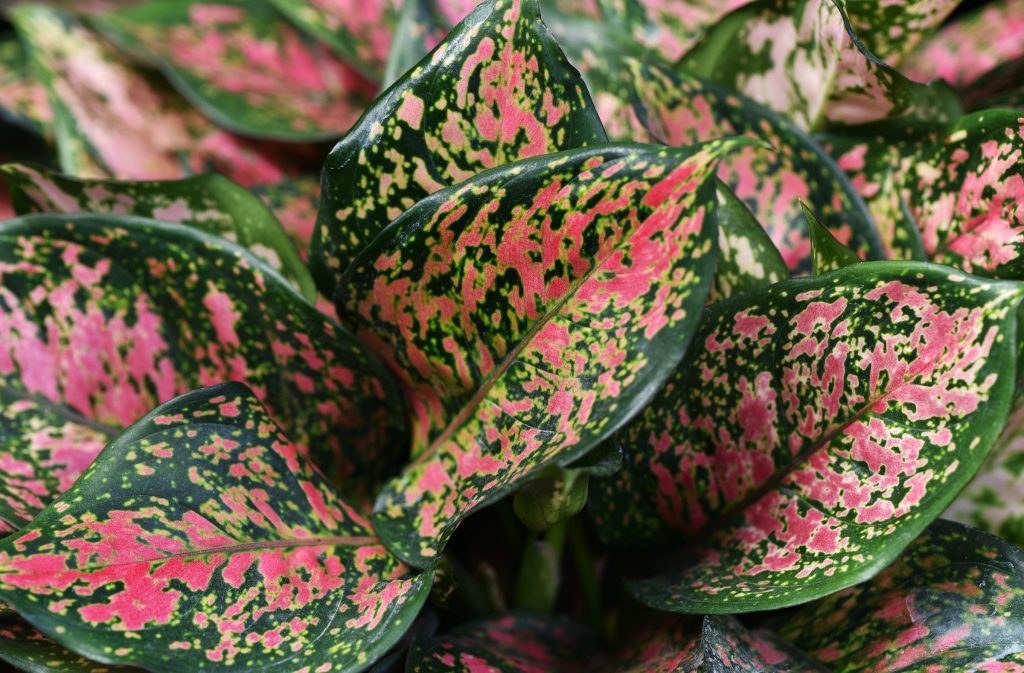Aglaonemas, also known as the Chinese evergreen, have large, glossy, oval-shaped leaves that come in bold patterns and colors, such as dark green, silver, and red. They are slow growers that reach up to around 20 inches in height. They are known for their foliage, but they do produce flowers occasionally. These flowers differ in shape from traditional flowers, having more of a corn-cob appearance. Native to tropical and subtropical areas of Asia and Guinea, Aglaonemas have a reputation for being lucky plants due to their longevity and striking appearance. Aglaonemas contain calcium oxalate crystals, which are toxic when ingested and may cause dermatitis, or swelling of the mouth and throat if the sap comes into contact with skin.
Aglaonemas thrive in bright, indirect light. It is worth noting that variegated varieties with whiter leaves require brighter light, while darker green varieties can thrive in lower light. In most cases, Aglaonemas even do well in fluorescent lighting when placed in windowless rooms.
Water using filtered water when the soil is 100% dry.
These plants grow best in higher humidity levels, preferably between 60%- 70%, and temperatures between 65-80°F. They are averse to the cold, but tolerant of low humidity. Exposure to cold drafts, and sudden shifts in temperature will harm your aglaonemas.
They’re easy to propagate in water or in soil via stem cuttings. Select a healthy shoot on the parent plant and make a cut just below a leaf node. Submerge the leaf node in water, or alternatively plant in well-draining soil.
